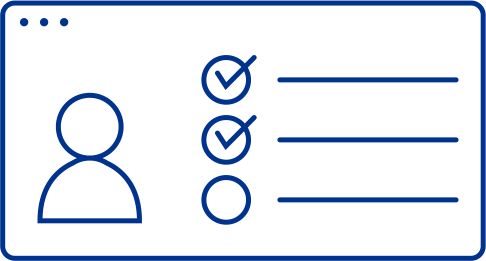For most companies, the end of the first quarter of 2025 marks the end of the preparation and audit of the annual financial statements as at 31 December 2024. As far as the EMIR compliance system is concerned, the audit season for the previous financial year 2024 often follows on seamlessly from the annual audit.
Within the European Union, only Germany currently requires that compliance with the EMIR guidelines or the EMIR compliance system be audited as a separate audit engagement. Under Section 32 (1) of the German Securities Trading Act (WpHG), corporations that are neither small corporations nor financial counterparties and that have entered into either OTC derivative contracts with a total nominal volume of more than EUR 100 million or more than 100 OTC derivative contracts in the past financial year are subject to an audit obligation.
In this case, the EMIR compliance system must be audited and subsequently certified by a suitable auditor within nine months of the end of the financial year. In accordance with Section 32 (2) sentence 2 WpHG, the company must appoint an auditor no later than 15 months after the start of the financial year to which the audit relates. Details on the EMIR compliance system and the audit can be found in the article published in December entitled “EMIR compliance system: what corporate treasury departments will have to do.”1
Over the past few years, the EMIR regulations have been subject to constant change. Perhaps the most significant change for non-financial counterparties was certainly the exemption from the reporting obligation for intra-group (since 17 June 2019) and extra-group transactions (since 18 June 2020), which is possible under certain conditions. Now, more changes to the EMIR guidelines have been announced with the aim of further increasing the transparency and security of the derivatives market. With EU Regulation 2024/2987, ‘EMIR 3.0’ was published in the EU Official Journal on 4 December 2024 and the associated changes came into force on 24 December 2024.
What changes does EMIR 3.0 introduce and how are non-financial counterparties affected by them?
Exemption from the reporting requirement for intragroup transactions
The exemption from the reporting requirement for intragroup transactions has already been in force since 17 June 2019. However, there have been repeated debates and discussions in recent years as to whether the exemption from the reporting requirement for internal derivatives should be withdrawn. Non-financial counterparties have been rather critical of these considerations, as they would seemingly counteract the aim of EMIR 2.0 of reducing the regulatory requirements for industrial companies.
Now that EMIR 3.0 has come into force, the previous regulations have been retained in principle. Under the new law, intragroup transactions continue to be exempt from the reporting requirement provided that the conditions set out in Article 3 of EMIR are met. This requires at least one counterparty of the intra-group transaction and the parent company to be a non-financial counterparty. Furthermore, the counterparties must be fully consolidated in the same group and both counterparties must be subject to appropriate centralized risk evaluation, measurement and control procedures.
That said, there have been changes with regard to intra-group transactions with counterparties based in a third country. These cannot benefit from any relief with regard to the reporting requirement if the following conditions are met:
- The third country is a high-risk third country within the meaning of Article 29 of EU Regulation 2024/1624. In other words, third countries whose national systems for combating money laundering and terrorist financing have significant strategic deficiencies are classified as high-risk third countries.
- Such third countries are among those designated by the EU as non-cooperative jurisdictions for tax purposes.2
Where a company meets the requirements for an exemption from reporting for intragroup transactions, the national supervisory authority of all intragroup counterparties based in the European Union is notified that the exemption is being applied. After a three-month objection period has elapsed, the exemption will then come into force.
With EMIR 3.0, treasury departments should review any reporting exemptions already obtained with regard to a change in the permissible third countries and define them for future EMIR reporting exemptions in their processes.
Maintaining an active account with an authorized EU CCP (Central Counterparty)
This amendment to EMIR 3.0 applies to all financial counterparties and non-financial counterparties that are subject to a clearing obligation pursuant to Article 7a of EMIR or that exceed the clearing threshold in one of the specified categories (pursuant to Article 7a (6) of EMIR). At present, these are interest rate derivatives denominated in euros or Polish zloty and short-term interest rate derivatives denominated in euros.
The obligation to maintain an active account with an authorized EU CCP also results in further obligations. These include the requirement that the EU CCP is authorized in accordance with Article 14 EMIR and that it provides clearing services for the relevant derivatives. This means that the counterparty under the EMIR obligation must maintain at least one active account with the relevant EU CCP. In addition, the so-called representativeness requirement applies, i.e. at least a representative number of transactions must be cleared via this account. However, an exception applies in cases where the outstanding clearing volume (notional) is less than EUR 6 billion for the above-mentioned interest rate derivatives contracts.
Insofar as there is no active account at an EU-CCP, a corresponding account is to be set up. Such an account is to be set up within six months of the obligation to maintain an active account arising. A financial or non-financial counterparty affected and required to set up a new active account should use ESMA's consultation draft as a guide for the technical details, given that the regulatory technical standard has not yet been implemented in its final form. Where an active account already exists, it must meet the requirement under Article 7a (3) EMIR.
Also, maintaining an active account is subject to a notification requirement. This requires a corresponding notification to BaFin and ESMA. ESMA provides a form3 for this purpose, which can be sent by email to BaFin and ESMA.4
Maintaining an active account also entails the duty for a financial or non-financial counterparty to monitor this account continuously. Pursuant to Article 7b (1) EMIR, this includes calculating the activities and risk positions of the above-mentioned categories of derivative contracts and submitting this information to the relevant national authority every six months so that it can assess compliance with the obligation. For their part, the relevant competent authorities ensure that the information is forwarded to ESMA without delay.5
Although the changes to clearing introduced by EMIR 3.0 will presumably have no direct consequences for corporate treasury, given that the clearing of certain types of derivatives by financial counterparties is now mandatory for the first time, we cannot rule out indirect effects such as the passing on of clearing costs for currency and interest rate hedging.
What EMIR may impact in the future
Going forward, a more precise definition of hedging could affect how the clearing threshold is calculated. When calculating the clearing threshold, the aggregated average month-end positions for the previous twelve months in the respective derivative classes are to be used as a basis, whereby no OTC derivative contracts are taken into account that objectively contribute to risk reduction (hedging). The calculation must be carried out at the level of the entire group of companies. There is, however, still no further definition of the term “hedging” in the EMIR regulation itself or from ESMA or BaFin. This has led to different interpretations with regard to the calculation of the clearing threshold. Although ESMA's Q&A contains a more detailed description of the term hedging, it does not provide any clear clarification regarding its application to the clearing threshold calculation.
Under EMIR, the term hedging is broader than under IFRS. IFRS defines hedging as the application of hedge accounting in accordance with IAS 39 / IFRS 9. As a result, OTC derivative contracts that qualify as hedges under IFRS regulations also qualify as hedges for EMIR purposes. In addition, OTC derivative contracts may still qualify as hedges for EMIR purposes even when they do not qualify as hedges under IFRS regulations. This is why many companies simply conclude that if derivatives are not generally entered into for speculative purposes, as per the guideline, then they must always be entered into for hedging purposes. Consequently, they treat these transactions as fully deductible when calculating the clearing threshold, even if they do not use hedge accounting. Others only consider derivatives that qualify for hedge accounting as reducing risk in the sense of EMIR.
Due to this mixed approach to determining the EMIR clearing threshold, it is necessary to clarify which OTC derivative contracts objectively contribute to risk reduction.
In addition, ESMA calls for a higher level of granularity with regard to commodity derivatives. There are countless types of commodity derivatives, ranging from aluminum to sugar, covering every conceivable product. The considerations of EMIR 3.0 (section 21 of EU Regulation 2024/2987) propose that the clearing threshold be broken down into sectors and types, e.g. into “agricultural, energy or metal commodities”. However, it would appear equally conceivable to make a distinction based on “environmental, social and governance criteria, environmentally sustainable investments or cryptorelated characteristics”. For traditional industrial companies, the first proposal would probably be the most sensible and also the most efficient to implement. We can therefore expect further requests for changes from ESMA on these points and on further details, and corresponding changes to EMIR in the future.
Conclusion
In conclusion, it can be said that EMIR 3.0 will hardly entail any changes for non-financial counterparties not subject to the clearing obligation. In terms of trading in intra-group derivatives, companies should regularly review the conditions for any exemption from reporting that they have obtained. Special attention should be paid to whether the non-EU countries in which the internal counterparty is based are recognized third countries or are among the high-risk third countries or the non-cooperative jurisdictions for tax purposes designated by the EU. Where new intra-group counterparties conclude OTC transactions, the exemptions must also be obtained in good time from the respective national supervisory authorities and BaFin.
If you have any questions or need advice on the EMIR compliance system or an EMIR audit, please do not hesitate to contact us.
Source: KPMG Corporate Treasury News, Edition 151, Januar/February 2025
Authors:
Robert Abendroth, Partner, Finance and Treasury Management, Treasury Accounting & Commodity Trading, KPMG AG
Katharina Baumann, Managerin, Finance and Treasury Management, Treasury Accounting & Commodity Trading, KPMG AG
______________________________________________________________________________________________________________________
1 EMIR compliance system - KPMG in Germany
2 EU list of non-cooperative jurisdictions for tax purposes
3 Link ESMA’s form
4 Email notification to BaFin at Article7aEMIR@bafin.de and to ESMA at AAR-notifications@esma.europa.eu
5 As soon as further clarification has been provided by ESMA, BaFin will provide a form for this purpose; in the meantime, notification can also be provided by email.
Robert A. Abendroth
Partner, Audit, Finance and Treasury Management
KPMG AG Wirtschaftsprüfungsgesellschaft


